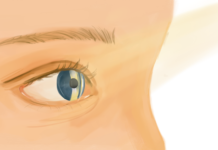<em>In this bi-weekly series, </em>Imprint<em> sits down with the heads of different services provided to staff and students across campus to learn where the money is going, how each service helps students, and what is happening behind the scenes.</em><br />
<br />
<br />
Figuring out what health coverage you’re entitled to, as a student, can be a complicated process. Each year, students pay two distinct health-oriented fees; one applies to UW Health Services, the other is charged through Feds and applies to your Feds/GSA Health and Dental Plan.<br />
<br />
It is important to note that these two bodies of health coverage are completely independent of one another from a monetary standpoint. The health services fee is a part of the student services fee ($134 per term), which also covers the accessible transportation service for students with temporary disabilities, the art gallery, athletics and recreational services, Centre for Career Action, counselling services, organizational and human development, student security service, and the Student Success Office.<br />
<br />
The Feds and GSA Health and Dental Plan acts as a supplementary health plan, is charged through Feds, and is administered by a third party.<br />
<br />
Additionally, students pay a fee each term that goes towards the expansion of the health services building. During the 2008-09 referendum, students committed to paying $10 per term for 20 years to raise the $7.75 million required for the building’s renovation.<br />
<br />
UW Health Services operates like most other healthcare providers in the province.<br />
<br />
“The doctors are working under a professional contract arrangement with health services and they bill the Ontario Health Insurance Plan (OHIP), they bill third party insurance carriers, they bill students if it is for a service that is not under OHIP. For example a verification of illness form is not covered,” said Barbara Schumacher, director of health services.<br />
<br />
Health services also bills health insurance programs run by other provinces and to the University Health Insurance Plan (UHIP )when the student is not covered directly by OHIP. It is required that all students who are not covered by OHIP have something equivalent.<br />
<br />
UHIP was created by Ontario universities in 1994 after OHIP stopped covering international students.<br />
<br />
In addition to the services covered by OHIP, UW Health Services provides several other programs to students that are covered by their funding.<br />
<br />
“We have an arrangement, which is a 60/40 split … so the university pays the 40 per cent and students are contributing 60 per cent. That’s incorporated in the SSAC fee,” Schumacher said.<br />
<br />
The student services fee is regulated by the student services advisory committee which is made up of the Feds VP of Internal, the president of the Graduate Students Association, three undergraduate students appointed by the Feds president, a graduate student appointed by the president of the Graduate Student Association, the associate provost of resources, the associate provost of students, and a director of a student service unit. Students cannot opt out of this fee.<br />
<br />
The portion of this fee that goes towards health services helps to cover services like dieticians, health education, medical supplies, lab technicians, nursing roles that support patient education, mental health support, injections, wound care, and dispensing.<br />
<br />
The Feds health plan is executed through I Have A Plan, a Canadian health plan administrator that offers health coverage services to schools and student associations in Canada.<br />
<br />
“The supplementary health plan [Feds plan] is really meant to be complementary and provide a better, more comprehensive support for somebody who’s ill.<br />
<br />
“Health Services co-operates with that plan to try to keep the premiums down by dispensing birth control pills without charging dispensing fees and charging just cost for the product, and we also dispense preventative vaccines and we don’t charge you for those either. When we are having that reimbursed, we bill the insurance carrier directly so that that’s not money out of your pockets,” Schumacher said.<br />
<br />
This fee, which is a part of the Feds administrative fee changes on a term-by-term basis and totals $293.92 annually ($0.81 per day).<br />
<br />
“That’s not money we see. It’s not meant for us; it’s meant for you,” Schumacher said.<br />
<br />
Regular students are charged $97.76 in the fall term ($51.25 for health and $46.51 for dental), and $195.53 in the winter, which covers the spring term as well ($102.50 health, $93.03 dental).<br />
<br />
Co-op students pay $178.44 ($94.81 health, $83.63 dental) per academic term and are also covered during their work terms.<br />
<br />
Students are given the option to opt out of this fee at the beginning of each academic term.<br />
<br />
“Everyone in Ontario has a provincial health plan … and that covers doctors, hospitals, physiotherapy, chiropractors, and other specialists. The supplementary health plan covers all of the things that are not covered by the provincial health plan, so that would be the prescriptions, a lot of medical equipment, massage therapy, and additional physiotherapy,” Schumacher said.<br />
<br />
The Feds health plan is similar to health plans offered by employers. It is designed for students who are not covered by a family member’s health plan, and do not have a plan through their employer.<br />
<br />
The $293.92 fee incorporates health, vision, travel, and dental insurance.<br />
<br />
The health portion covers up to 80 per cent of the cost of visits to psychologists, massage therapists, chiropractors, physiotherapists, naturopaths, osteopaths, dieticians, podiatrists, and speech therapists with a maximum of $400 per calendar year for each service respectively. Coverage reaches its maximum at $10,000.<br />
<br />
Vision insurance covers a portion of the costs for eye exams, eyeglasses, contact lenses, and laser eye surgeries with varying periods of eligibility and a maximum of $275 in coverage.<br />
<br />
It also offers a maximum of $1 million in coverage for out of country medical incidents for which students are eligible for the first 150 days of each trip.<br />
<br />
The dental plan offers a maximum of $750 in coverage per year and includes preventative dental services, basic services, and major restorative dentistry.<br />
<br />
UW Health Services reports their finances to SSAC each year where they are published through the Secretariat. The report could not be located and the SSAC could not be reached for comment.





























